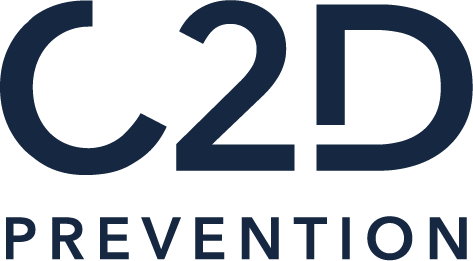Workshop
Loss Diagram Workshop
Information Flow Breakdown Model: Improving Communication to Secure Practices

In many professional environments, incidents are not caused by a lack of skills or equipment, but rather by poor information flow. A poorly conveyed instruction, a misunderstood message, or a delay in receiving critical information can be enough to cause an accident.
The “Information Flow Breakdown Model– Improving Communication for Greater Safety” workshop raises team awareness of the invisible mechanisms of information loss and provides practical solutions to build clear, smooth and secure communication at every level of the organisation.
Through hands-on exercises, simulations, and reflective discussions, this workshop helps foster a culture where high-quality information transmission becomes a key lever for preventing occupational risks.
OBJECTIVE
Understand and correct communication failures that increase the risk of workplace accidents.
CONTENT
- Group role-play exercise simulating degraded information transmission and its consequences
- Topics covered: Loss Diagram, consequences of poor communication on safety
- Provision of communication tools
FORMAT
- Coaching: participative discussions, exercises, role-playing
FAITES DE LA PRÉVENTION UN RÉFLEXE !
INSCRIVEZ VOTRE ENTREPRISE DÈS MAINTENANT
et garantissez un environnement de travail plus sûr pour tous !
Format & Target Audience
The workshop can be delivered in person or remotely (online version led by a certified VILT – Virtual Instructor-Led Training – coach).
Designed for in-person facilitation, it is suitable for employees and all levels of leadership.
Recommended group size: 6 to 12 participants to encourage interaction and meaningful feedback.
Learning Objectives
- Identify common communication breakdowns
in high-risk professional settings. - Understand the direct consequences of poor
information transmission on occupational health and safety. - Improve clarity in team exchanges, especially in stressful, urgent, or multitasking situations.
- Develop communication reflexes that support safety, even under pressure.
- Encourage collective vigilance by promoting active listening, rephrasing, and mutual confirmation routines.
- Reduce incidents caused by verbal, written, or non-verbal safety instruction failures.
Depending on the time available
Workshop Programme
1Introduction: Invisible Losses of Information
Through an engaging and interactive activity, participants experience a scenario involving degraded information transmission, revealing key failure points in the communication chain. This sets the stage for a discussion about clarity and listening in the workplace.
2Understanding the “Information Flow Breakdown Model”
Introduction to a simple yet powerful visual tool that illustrates how information progressively deteriorates from sender to receiver. This model helps participants grasp how misunderstandings, imprecisions, and omissions accumulate—ultimately leading to incidents.
3Assessing Safety Impacts
Using real-life examples, participants evaluate how communication failures can lead to real consequences: delayed responses, misinterpreted instructions, lack of coordination. These cases are linked to incidents or near misses experienced within the organisation.
4Keys to Clear and Reliable Communication
Presentation of practical tools and methods, including:
- Foundations of non-violent and assertive communication
- Active rephrasing to prevent misunderstandings
- The 3-check rule (understand, rephrase, confirm)
- Structuring verbal and written instructions (DESC tool, briefings/debriefings, checklists)
5Practical Exercises
Through role-plays, participants apply the communication tools discussed, then analyse their effectiveness. These simulations highlight listening skills, handling unexpected situations, and the impact of stress on communication quality.
6Individual and Collective Action Plan
Each participant identifies concrete areas for improvement in their daily routines: how to convey messages more effectively, confirm understanding, and receive instructions more clearly. A mini guide of best communication practices can be co-developed by the group.
7Teaching Methods
The workshop uses active and participatory learning methods to maximise engagement:
- Realistic scenarios
- Guided group debriefings
- Interactive communication games
- Small-group work
- Co-design of communication tools suited to field realities
Sessions are led by a consultant specialising in risk prevention, human factors, and communication, ensuring a supportive yet demanding learning environment.
Why Choose This Workshop?
Because in most accidents, communication is either an aggravating or triggering factor.
By improving information flow within teams, this workshop helps you:
Reduce avoidable
human error
Support safe decision-making
in operational environments
Prevent accidents
caused by confusion, forgetfulness or misinterpretation
Promote a safety dialogue culture
rooted in clarity and trust
This workshop contributes to professional risk prevention
while also strengthening team well-being and cohesion.
Conclusion & Call to Action
Clear, smooth, and secure communication is the key to preventing many workplace incidents. The “Information Flow Breakdown Model” workshop offers a practical and engaging approach to transforming communication practices in the field.
To organise this workshop in your company or tailor it to your industry-specific risks, contact our occupational health and safety consulting team today.
